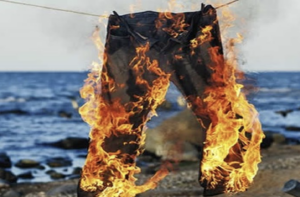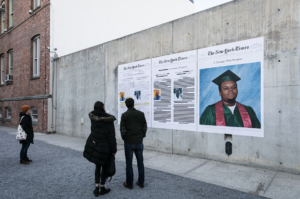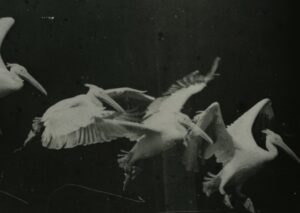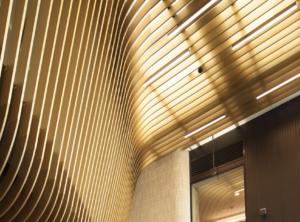The BA Photography Studios for Semester 2, 2023 are described below. These are the options for the first and second year students offered under the following course codes:
Photography Studio 1 VART 3593 (1st year)
Photography Studio 3 VART 3597 (2nd year)
Please read them carefully and decide upon your first, second and third preferences.
IMPORTANT – You must not repeat Studios and you must enter three different preferences. Every effort will be made to place you in your first or second preference. Allocations are made on the basis of space available and group balance, with the higher year level being given priority (i.e it is not 'first come, first served').

https://www.istockphoto.com/photos/pants-on-fire
Fictional Vision
Fiction reveals truth that reality obscures. – Ralph Waldo Emerson
Images carry narratives/fictions through society, stories that shape who we are as individuals and as a culture. Photography, with its implication of ‘truth’ provides a persuasive rhetorical tool. Yuval Noah Harari maintains that is through the sharing of stories that the human species has been able to organise on such a grand scale. Images, as the Lingua franca of globalised society are an important conduit for the stories that we use to negotiate the shape and contours of our identities and of our culture. Images provide ideals and standards against which we measure ourselves and others and establish consensus on what we collectively consider to be normal. In this studio we will use images to explore photography’s role in dissemination of constitutive narratives; (those that play a role in the social construction of our identities), and those that exert a regulatory influence upon us and our culture. Students will choose an area of interest and devote the semester to exploring the narratives that sustain particular institutions, discourses and practices.
Cultural areas or zones in which to set your response to the course question include the following: Gender and sexuality – Technology and Progress, Nature and Environment – Meritocracy and Success – Love and Marriage.
Art, World and Client focused students are all equally welcome. Studio discourse is equally relevant to all streams.
Studio and learning aims:
- To destabilize comfortable notions of absolute truth.
- To think about how cultural fictions function.
- To engage with modes of visual story telling beyond the merely descriptive.
- To consider ways in which identities are formed and culture/history is produced.
- To have fun inventing and directing characters.

Alexandra Bell, Counter-Narratives, 2017. Counternarratives is a series of works by American media artist Alexandra Bell, acclaimed for her radical re-edits of newspaper articles to reveal biases and assumptions about race and gender.
Forms for Encounter & Exchange: The Collingwood Studio
Meaningful engagement with communities and contexts has become a core part of photography, media and art practices that seek to engage the public in dialogue to affect social change through collaboration with other creatives, communities, and institutions on local issues. Driven by a desire for social connection and to activate politics in public space, this ‘social turn’ has renewed conversations about the ethics of collaboration, the contexts of production, and the benefits of civil dialogue. This studio is a critical inquiry into the social forms for encounter and exchange in creative practice.
In this studio, you will participate in a 12-week residency at Collingwood Yards Arts Precinct where you will work with community partners to co-develop projects that respond to local concerns. You will explore different forms of collaboration through individual exercises and group projects alongside lectures, public seminars, workshops, reading discussions, fieldwork, and community consultations. Evaluation will privilege practice-led approaches, ethical engagement, and collaborative aesthetics in relation to the aspirations and values of our partners. Creative outcomes might include community newspapers, photobooks, public artworks, podcasts, community workshops, documentary projects, or public exhibitions. The studio will be run at Collingwood Yards. It requires a high level of commitment and initiative, in addition to a willingness to work with and learn from community partners. It is always a lot of fun!
Community partners have included: The Social Studio, The Centre for Projection Art, Bus Projects, Composite Moving Image Bank, Good Cycles Social Enterprise Hub, RYMS (Real Youth Music Studio), Cultivating Community, The Big Umbrella (with ABC Fact Check), Visual Stories Workshop, the Tote, and walking tours with Uncle Colin Hunter from the Wurundjeri Woi Wurrung Cultural Heritage Aboriginal Corporation.
Studio and learning aims:
- Develop skills in active listening and relational ethics.
- Produce a creative project in collaboration with community partners.
- Demonstrate an applied critical understanding of the politics of representation and collaborative aesthetic practices.

Etienne-Jules Marey
Moving Image Studio
In this studio, our inquiry will be driven by an investigation of what movement and duration can offer in lens-based media. The course is designed to provide an opportunity for students to develop their time-based creative practice, focusing on production and critical discussion.
Students will learn fundamentals of shooting and editing video, and engage in key theoretical discourses around moving image. Students will acquire skills pertaining to moving image practice and theory across a range of potential applications — video art, commercial “motion”, and short documentaries, and be exposed to a range of critical information concerning moving image as a significant aspect of visual culture.
Learning activities will include lectures, video screenings and analysis, reading and discussion, presentations, critique, and hands-on technical workshops. Informal and formal critiques of work are central to the course and a high level of personal engagement and initiative is expected. The course requires students to have regular access to a DSLR or mirrorless camera with video recording functionality.
Studio and learning aims:
-
Develop technical, conceptual, and aesthetic skills for the production of time-based creative work.
-
Develop a basic understanding of the critical discourse around moving image.
-
Develop and refine the ability to be self-reflective and to critically evaluate moving images.

Bren White https://www.instagram.com/brennyshoots/
Translating Dimension: Architecture & Photography
This studio will look at photography’s role in documenting architecture and creating a sense of understanding of the architectural space. Our focus will be on the relationship between the architect, the building, and the photographer.
Working with Melbourne-based architects you will gain a practical and theoretical understanding of the role the photographer within the industry. You will be encouraged to develop an individual approach and interpretation while considering the intentions of the architect.
You will produce work that is considered and responsive and is the product of communication (with architects etc.) research, planning (developing an individual approach) & innovation.
Studio and learning aims:
-
Create an understanding of the photographer’s role within architectural photography and the industry in a broader sense.
-
Understand the role of the photographer as a conduit - translating an understanding of the 3-dimensional space to the photograph.
-
Develop important technical and practical skills in the craft of architectural photography.